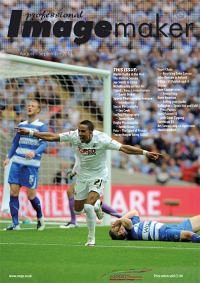articles/Postproduction/portraitretouchingtools-page2
Portrait Retouching - Photoshop Tools and Options - part 2 of 1 2
by Jane Conner-ziser Published 01/08/2011
Clone Stamp Tool: Use this tool to make trees and bushes, cover objects in the background and trim clothing. DON'T use it on the face! The options are usually used at Normal Mode, Opacity Varying, Flow 100%, Aligned is checked and Sample All Layers is selected. Apply the Clone Stamp to a separate layer by selecting one particular area (Option or Alt tap) and copying it to the place you want to cover. Many times edges are blended with the Dodge and Burn tools, value is adjusted using Levels or Curves or the colour is balanced. Merge this layer onto the background copy when the work has been completed.
Blur Tool: I use it to soften edges that remain too sharp after other methods have been used. It's a touch-up tool for me and I set the options to Normal Mode, 50% strength. Don't overdo it - take the time to do the best you can up front.
Smudge Tool: This tool is great for making eyelashes and detailing the edges of hair on layer masks! For eyelashes, use it on a separate layer that has been changed from Normal to Multiply blending mode. Set the options for the Smudge tool to Normal Mode, 70% strength and check Sample All Layers. Grab and pull eyelashes out from the opening of the eyelids, adjust the edges and opacity, and include with the layer groups for eye enhancement. For working on layer masks, set the opacity and size of the brush to the amount of work that needs to be done and detail the edges of the layer mask by pulling it in and out around the edges of the hair.
Dodge and Burn Tools: These are my all-time favourites for skin work. I prefer them over all other dodging and burning methods because they allow me to dodge to white and burn to black with very little discolourations compared to other methods (such as image adjustment layers, 50% grey fill layers, etc). They are applied directly to the background copy (or, if you are timid, a duplicate of it). The options on both tools are set to the Range of Midtones and the exposure set to 5% (can be reduced to 3% if the tool 'rushes' you - makes a mark every time you make a stroke). Protect Tones is not checked for skin work on the Dodge tool, but may be selected for the Burn tool. The Dodge tool is used to colour over 'splotchy' areas that are too dark, and the Burn tool is used to colour over 'splotchy' areas that are too light. They are used to contour lighting, shape faces, blend skin tones, reduce wrinkles, fix edges of other artwork ...there are many uses for these tools. Brush size is important when dodging and burning. The brush size should be just slightly smaller than the area you wish to lighten or darken. Brush size must be changed frequently; don't try to get by with one because you're too lazy to change it! There IS a shortcut, however. With one of the tools selected (I usually use the Dodge tool), the Option or Alt key may be held down while working to access the other tool. This means you can be dodging, then holding down the Option or Alt key; you will be burning using the same brush. When you release the Option or Alt key, you go back to the original function of the tool.
This covers the tool set for portrait retouching and the most common options and techniques used with them. Retouching artists also use layers, layer masks, selection tools, masking options, paths, filters and plug-ins but we'll get to those in future sessions. Good retouching artists can use all of these tools unconsciously, just like good photographers use their cameras without thinking about what they are doing with them. It's common to start a job with the Healing Brush and finish it with Dodging and Burning. It's common to recolour an area of the face, especially when one of the lights or reflectors is out of position or too hot. Concentrate on developing a complete tool box of options you can pull out as needed for any retouching job you're faced with - every job is different.
See you soon - Thanks! Jane
Please Note:
There is more than one page for this Article.
You are currently on page 2
- Portrait Retouching - Photoshop Tools and Options page 1
- Portrait Retouching - Photoshop Tools and Options page 2
1st Published 01/08/2011
last update 09/12/2022 14:58:04
More Postproduction Articles
There are 0 days to get ready for The Society of Photographers Convention and Trade Show at The Novotel London West, Hammersmith ...
which starts on Wednesday 15th January 2025





